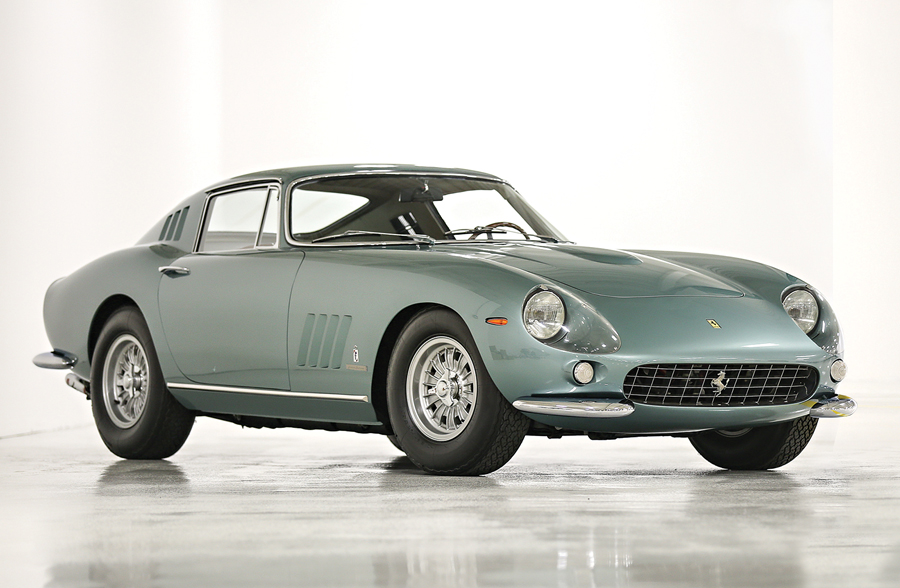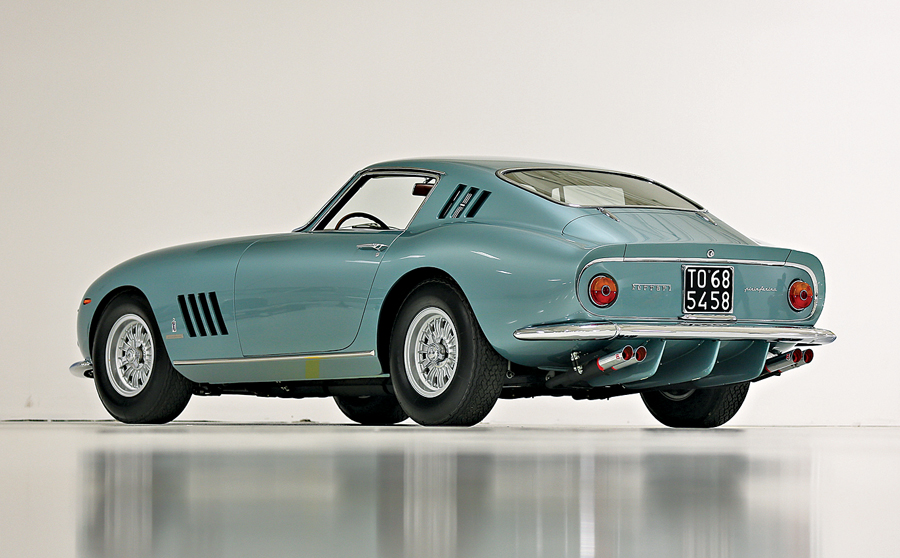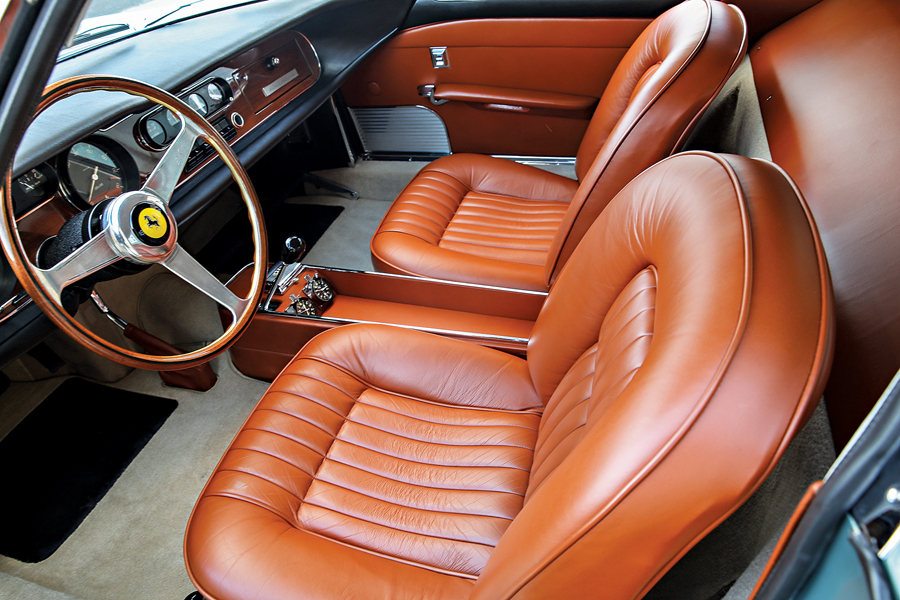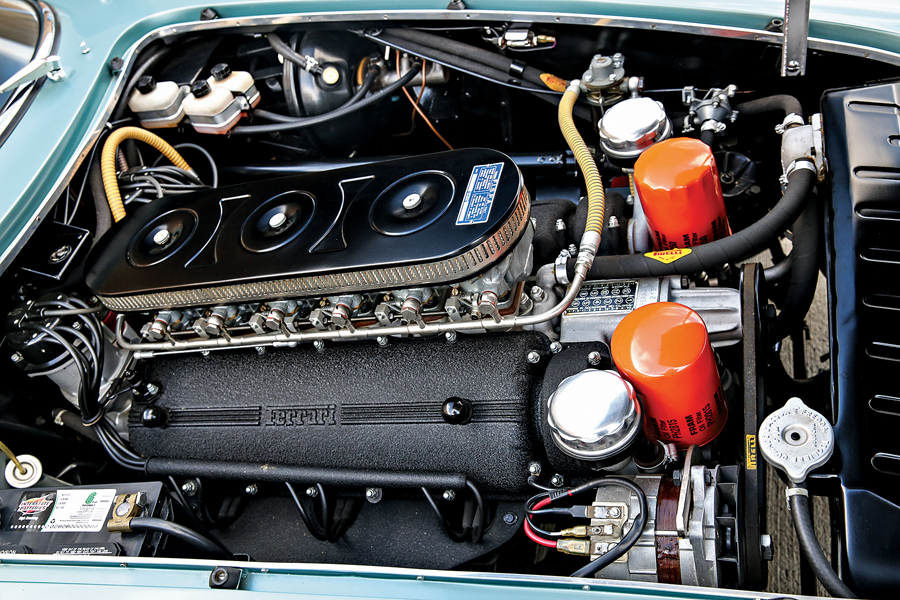SCM Analysis
Detailing
| Vehicle: | 1965 Ferrari 275 GTB Speciale |
| Years Produced: | 1964–66 |
| Number Produced: | 440 |
| Original List Price: | $11,500 |
| SCM Valuation: | $2,218,500. Add $75k for six carbs |
| Tune Up Cost: | $3,500 |
| Chassis Number Location: | Right front chassis rail by top of shock mount; plate on right inner fender |
| Engine Number Location: | Right side rear near starter motor |
| Club Info: | Ferrari Club of America |
| Website: | http://www.FerrariClubofAmerica.org |
| Alternatives: | 1966 Lamborghini Miura P400, 1959 BMW 507 Roadster, 1956 Mercedes-Benz 300SL Gullwing, 1967 Maserati Ghibli coupe |
| Investment Grade: | A |
This car, Lot 134, sold for $8,085,000, including buyer’s premium, at Gooding & Company’s auction in Scottsdale, AZ, on January 20, 2018.
The 275 GTBs are some of the most beloved models in Ferrari’s history — and for good reason. Few automobile silhouettes can upstage the 275 GTB’s long front end, fastback roofline and slightly uplifted Kamm tail.
The 275 GTB interior is equally bewitching, with barrel-back bucket seats, a cool passenger’s foot rest, and a rear luggage shelf with hold-down straps for cargo. It’s hard to imagine a more perfect automobile design.
There are about as many variations of 275s as Bubba Gump had shrimp. The original 275 GTB style is called a short-nose. Later models had a longer snout and are called long-nose cars. The 275 GTB bodies were built in both steel and alloy. A rare few GTBs were built in an open-top configuration known as NART Spyders, a nod to the U.S. Ferrari importer’s North American Racing Team.
The car was originally designed with two overhead camshafts. Ferrari later added two more camshafts and called that model a 275 GTB/4. Two-cam models could be ordered with three or six carburetors. Four-cam engines featured six 2-barrel carburetors.
The base engine boasted a healthy 280 hp.
Hello, gated shifter
The 275 GTB was the first production Ferrari to feature a rear transaxle. Shifting the transaxle required running a rod from the shift lever to the transaxle. This was the introduction of the legendary gated shifter in a Ferrari production car.
Transferring the engine’s power to the transaxle also required some novel engineering. The original solution is known as an open driveshaft. It was a simple driveshaft running from the engine to the transaxle. Open driveshafts have excessive vibration unless the engine and transaxle are in perfect alignment.
In later cars, a center-bearing “Interim” driveshaft was used to reduce vibration. The final solution encapsulated the driveshaft in a rigid torque tube that held the engine and transaxle in perfect alignment, eliminating any vibration.
In value hierarchy, the steel-body, short-nose 275 GTB is the most affordable production model. The 4-cam cars generally lead the value pack. Production 275 GTBs start around $2 million and go over
$4 million.
A one-off 275 GTB for the ages
Not all 275 GTBs are standard production models, and this is where the price guide gets thrown out the window and our subject GTB steps in.
Our subject car is a steel-body, short-nose example with a stock 2-cam, 6-carb engine and a torque-tube driveshaft. It has no competition history. On paper it’s in the lowest echelons of the 275 world, but when you add its provenance, it is far from an ordinary 275 GTB.
Not only is chassis 06437 the only 275 GTB that was not built at Scaglietti, it was designed and built for the boss — Battista Pininfarina. It has many unique features. It was presented at several important shows and has a well-known history.
In 2014, Steve McQueen’s standard production 275 GTB/4 sold for $10,175,000 — setting the bar for a celebrity example. Without the McQueen connection, that car is just another 275 GTB/4.
Battista Pininfarina may not have the celebrity status of Steve McQueen, but his influence in the automotive-design world is unrivaled. Pininfarina’s 275 is distinct in so many ways that even without knowing the Pininfarina connection, the car stands out in a crowd.Add the Pininfarina connection to this one-off car, and you have a self-portrait from a genius.
A bright future — after some work
Chassis 06437 was restored about 26 years ago, shown a couple times, and has been hibernating since. It ticks all the boxes of a great concours contender. It hasn’t been shown for 25 years. It is sure to be invited to the best shows. It is sure to draw the judges’ attention and earn consideration for a major award.
However, chassis 06437 is not a virginal, original car. It was delivered to the restoration shop in 1992 as a pile of boxes. The restoration washed off some of Battista’s DNA. Today the car is a non-runner that shows the effects of long-term storage.
The $8,085,000 sale price barely broke the low estimate. The price may have been a little disappointing, but it is still a ton of cash in today’s market.
The seller has been liquidating a large collection of important cars. He has owned this car for many years and multiplied his investment many times over. The buyer will have a hefty restoration bill — and a top-shelf trophy. I’d call this one a huge sale but fair for both sides. ♦
(Introductory description courtesy of Gooding & Company.)



